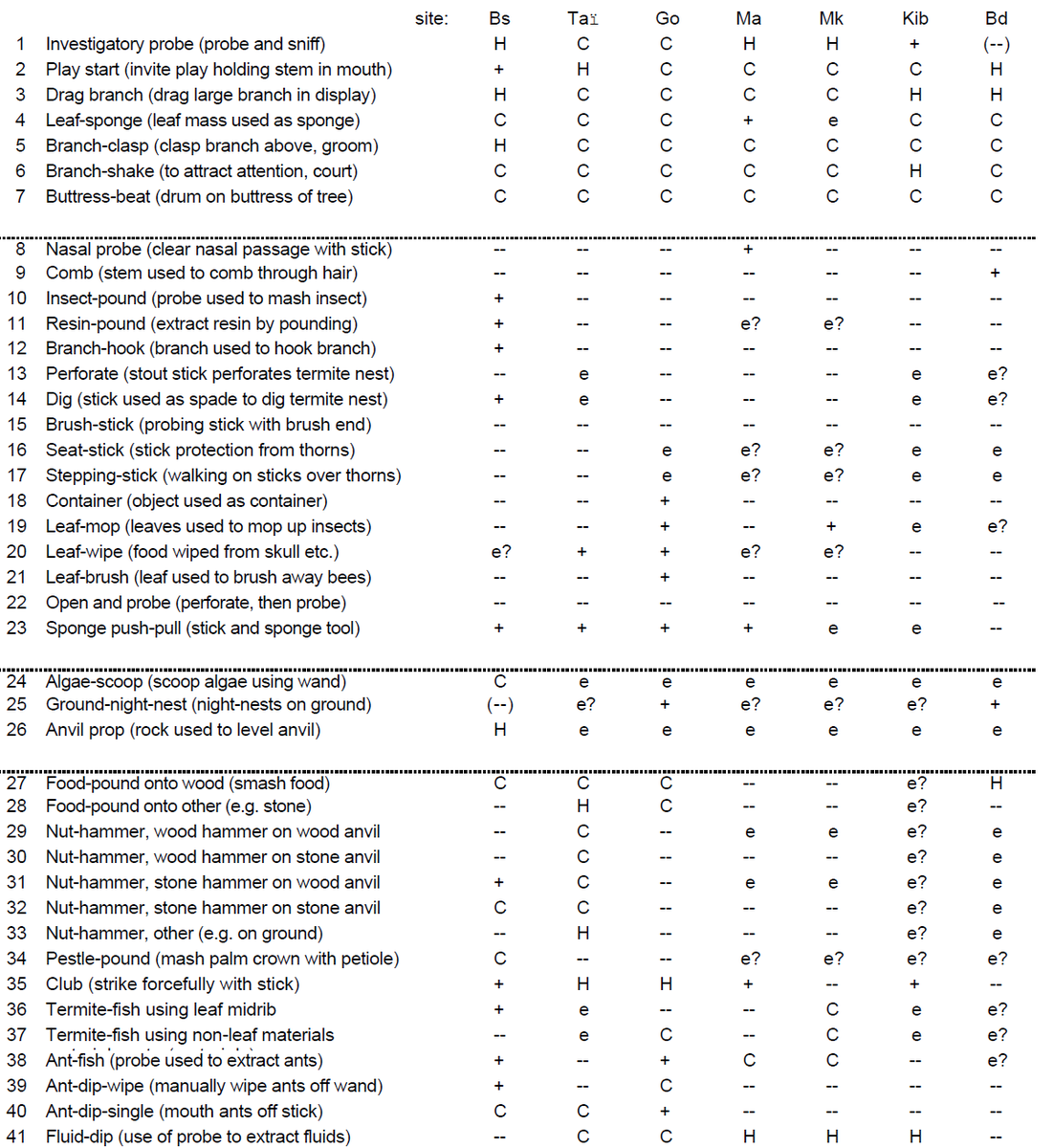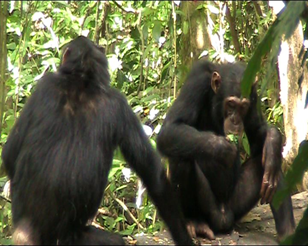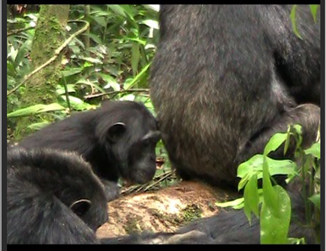Reading this thread made me wonder whether anybody has yet started one on how the observations/experiments that became instrumental in defining our careers started in the first place. My #PhdExperiment is called the Honey-trap experiment and started in a basement in Scotland. 1/n https://twitter.com/icouzin/status/1254510140188962816">https://twitter.com/icouzin/s...
My PhD adviser, Klaus Zuberbühler and I, had recently agreed on the question my PhD would answer: Why do @BudongoChimps not use (that many) tools? We both had a background in conducting field experiments on vocalizations. I thus planned to design a tool use field experiment. 2/n
In the fall of 2008, I was sitting on my desk in said basement (aka known as the & #39;Wolfson room& #39;, that will have left dear memories to many of us @NakedPrimate , @zannaclay , @felicitymuth?) and reading Andy Whiten et al& #39;s famous 1999 review on chimpanzee cultures. 3/n
Looking at the table, I noticed trait 41 could be of interest: @BudongoChimps did not exhibit & #39;fluid-dip& #39; to consume honey while nearby @KibaleChimps did. I popped into Klaus& #39; office, 3 flights of stairs above (oh lovely St Mary& #39;s Quad), and that& #39;s how the & #39;trap& #39; was born 4/n
A few months later, in Uganda, my field assistant Steven and I roamed the area to find beekeepers close to the forest. We wanted bees that foraged in the forest, and provided gloves and masks(!) for harvesting to minimize risks of transmitting pathogens to the chimps 5/n
By March 2009, we had conducted successfully our first trials with the @BudongoChimps. Here is the first manufacture of leaf-sponging tools by Rachel and Pascal in Feb 2009. This was super exciting as they did so at the first & #39;honey-trap& #39; experiment trial ever implemented 6/n
In a hastily arranged trip, I contacted Richard Wrangham & Martin Muller with my results & asked if I could run the honey-trap experiment at their field site, 180km away. After a 10h hour trip via Kampala and 2 Link buses, I was in April 2009 ready to test the @KibaleChimps 7/n.
The chimps once again beat my expectations, particularly Wilma who manufactured a stick right away. Based on my master work, it was no surprise that females were the clever ones with respect to tool use ( https://doi.org/10.1016/j.anbehav.2010.09.005)">https://doi.org/10.1016/j... but compare with Kakama seating on the hole https://abs.twimg.com/emoji/v2/... draggable="false" alt="😑" title="Expressionless face" aria-label="Emoji: Expressionless face">8/n.
https://abs.twimg.com/emoji/v2/... draggable="false" alt="😑" title="Expressionless face" aria-label="Emoji: Expressionless face">8/n.
Hence, we had clear evidence that wild chimpanzees rely on cultural knowledge to solve an experimental honey acquisition task ( https://doi.org/10.1016/j.cub.2009.08.060).">https://doi.org/10.1016/j... To this date, and a hundred of experiments later, @BudongoChimps still do not use sticks, but at least they use moss https://abs.twimg.com/emoji/v2/... draggable="false" alt="😉" title="Winking face" aria-label="Emoji: Winking face">! 9/9.
https://abs.twimg.com/emoji/v2/... draggable="false" alt="😉" title="Winking face" aria-label="Emoji: Winking face">! 9/9.

 Read on Twitter
Read on Twitter

 8/n." title="The chimps once again beat my expectations, particularly Wilma who manufactured a stick right away. Based on my master work, it was no surprise that females were the clever ones with respect to tool use ( https://doi.org/10.1016/j... but compare with Kakama seating on the holehttps://abs.twimg.com/emoji/v2/... draggable="false" alt="😑" title="Expressionless face" aria-label="Emoji: Expressionless face">8/n." class="img-responsive" style="max-width:100%;"/>
8/n." title="The chimps once again beat my expectations, particularly Wilma who manufactured a stick right away. Based on my master work, it was no surprise that females were the clever ones with respect to tool use ( https://doi.org/10.1016/j... but compare with Kakama seating on the holehttps://abs.twimg.com/emoji/v2/... draggable="false" alt="😑" title="Expressionless face" aria-label="Emoji: Expressionless face">8/n." class="img-responsive" style="max-width:100%;"/>


